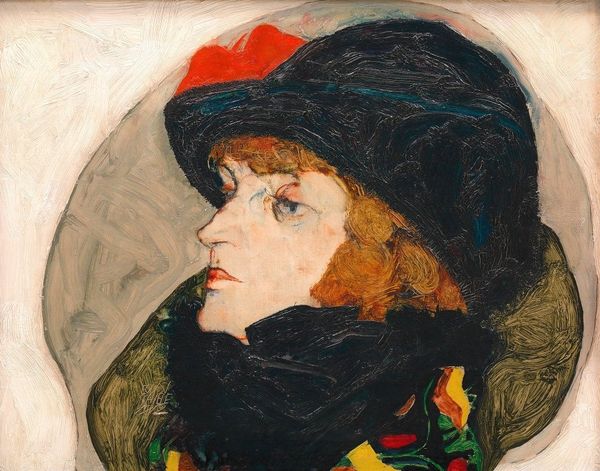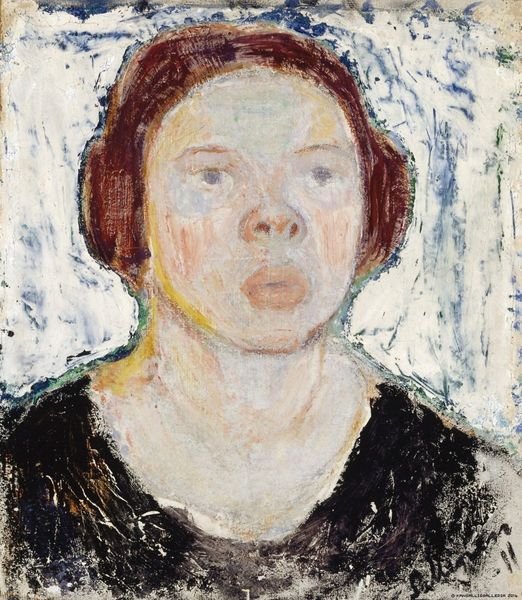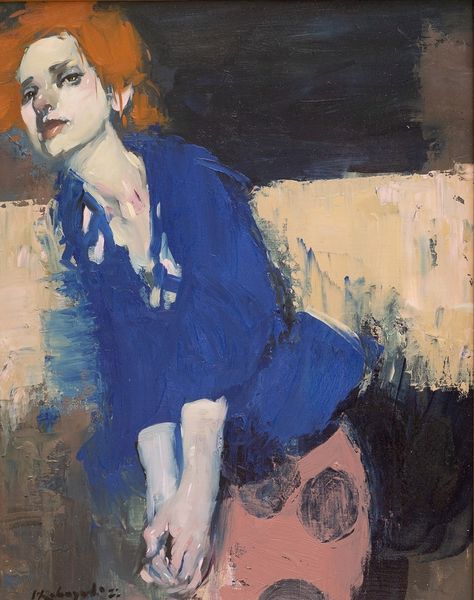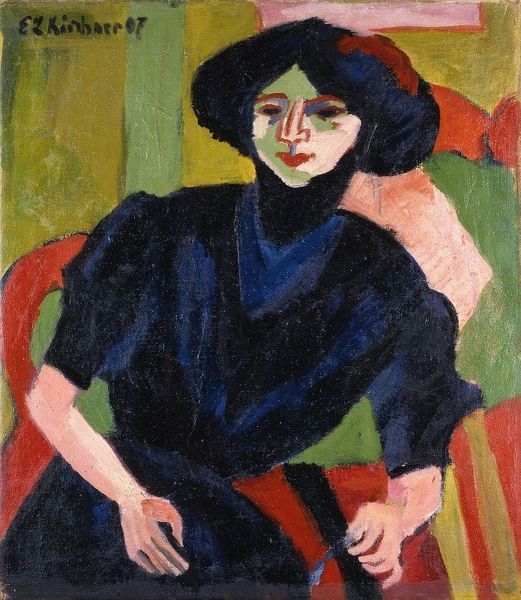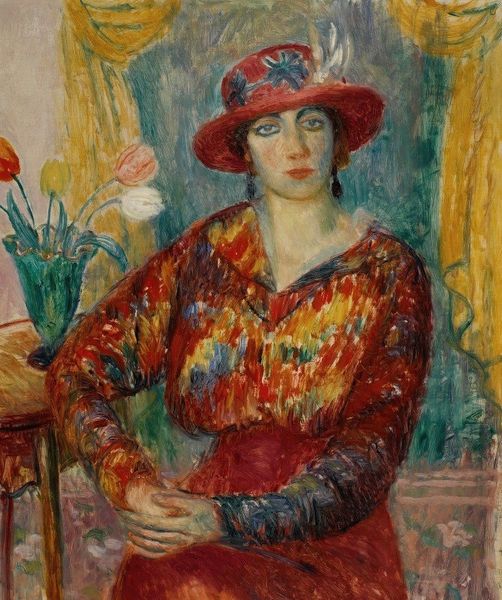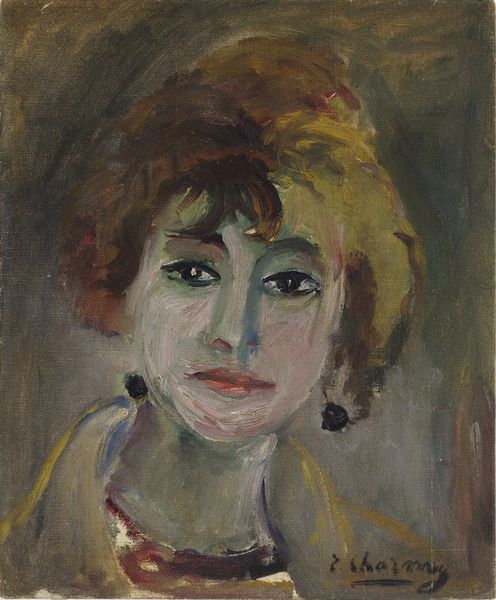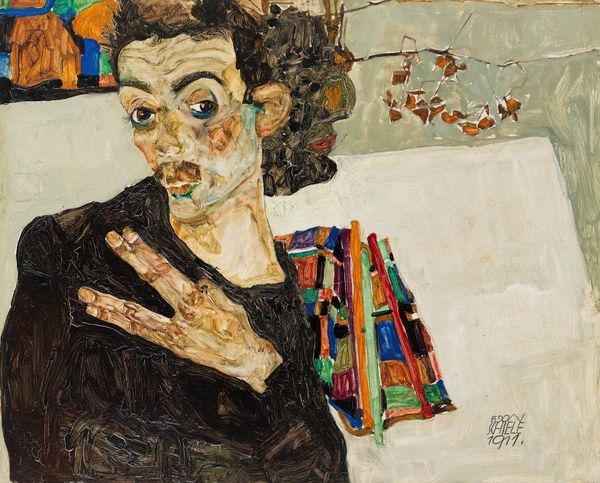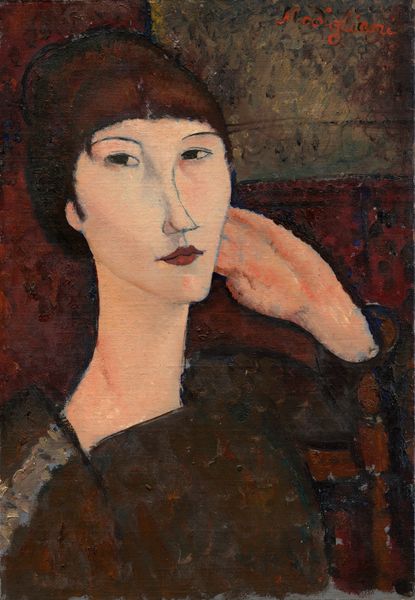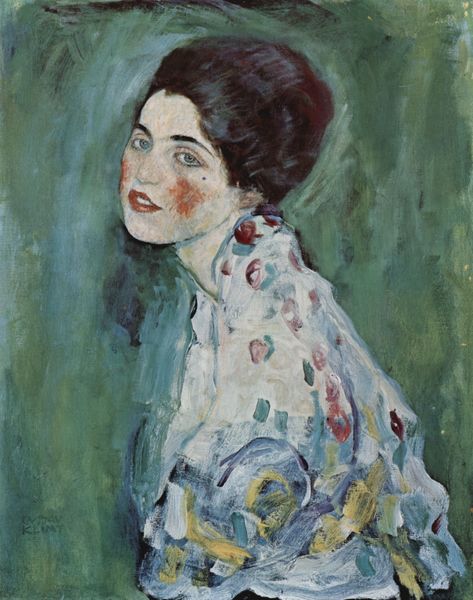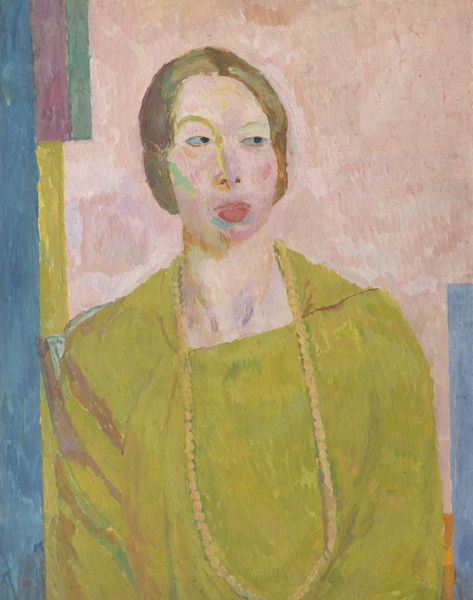
oil-paint
#
portrait
#
figurative
#
oil-paint
#
figuration
#
oil painting
#
expressionism
#
portrait art
Copyright: Public Domain: Artvee
Art Historian:Editor: This is Egon Schiele's "Portrait of Wally Neuzil," painted in 1912, using oil paint. It strikes me how textured it is, how heavily the paint is applied, especially around her eyes and the collar. It's almost sculptural. What do you see when you look at it? Art Historian: What immediately grabs me is the visible process, the deliberate application of paint. Notice how the texture isn't just representational; it’s performative. It makes you think about the physical act of painting. How do you think Schiele's choice of oil paint and that heavy impasto influence our understanding of Wally? Editor: That’s interesting, the performative aspect. I hadn’t considered it that way. I guess it does make her feel more…present, almost raw. Could it be connected to her position as both a model and Schiele's lover? Art Historian: Absolutely! Think about the socio-economic realities. Oil paint, readily available in tubes by this point, facilitated his fast and expressionistic brushwork and offered certain tactile qualities, a sort of intimacy through material engagement, allowing a translation of psychological and emotional states. It shows us a real body worked and observed over a period of time. What’s your take on the almost grotesque angles, specifically on her neck and face? Editor: It’s unsettling but feels deliberate. As though he is taking possession by painting her this way. Like laboring over each stroke emphasizes his ownership of her representation. Art Historian: Precisely! By highlighting the physical act and inherent properties of this medium, Schiele gives the subject a voice. It isn’t simply about a "portrait," but an examination of representation through a kind of labor. We become aware of all of those hours spent together! And we are prompted to recognize both artist and subject involved in an intimate process that complicates ownership. Now, what has interested you most in the material aspects of art in light of this discussion? Editor: How an artwork’s construction can influence the impact. Considering material makes one consider not only the image, but also how that image came to exist in such a form. Thanks so much. Art Historian: A useful perspective, I agree. Thinking materially always leads to more thoughtful approaches and ideas.
Comments
beckylawrence 10 months ago
⋮
Hi, Your portfolio has left me in awe! I'm eager to acquire your artworks and showcase them at my collection. Your unique style and creative vision align perfectly with our mission. Please let me know which pieces are available for sale. I'm excited to collaborate and bring your art to a wider audience. Warm regards, Rebecca.
Join the conversation
Join millions of artists and users on Artera today and experience the ultimate creative platform.
